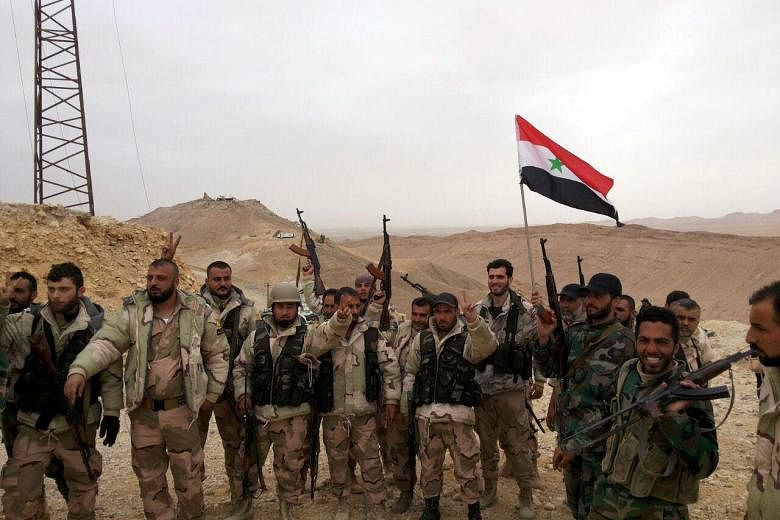BEIRUT (REUTERS, AFP) - Syria's military command said on Sunday (March 27) it had taken full control of the famed ancient city of Palmyra, in a victory it said marked the beginning of the collapse of the Islamic State in Iraq and Syria (ISIS).
In a statement read out on Syrian television, it said that the recapture of Palmyra from ISIS also showed that Syrian government forces and their allies were the only force capable of defeating terrorism in Syria.
It said the army and its allies, backed by Syrian and Russian air forces, would continue their campaign against ISIS, the Nusra Front "and other terrorist groups".
The Syrian government has described all armed factions fighting President Bashar al-Assad as terrorist groups.
The Syrian Observatory for Human Rights said there were still clashes on the eastern edge of Palmyra, around the prison and inside the airport, but the bulk of the ISIS force had withdrawn and retreated east, leaving Palmyra under Assad's control.
Syrian state-run television broadcast from inside Palmyra on Sunday morning, showing largely deserted streets and several badly damaged buildings. It quoted a military source saying Syrian and Russian jets were targeting ISIS fighters as they fled, hitting dozens of vehicles on the roads leading east from the city.
For government forces, the recapture of Palmyra opens up much of Syria's eastern desert stretching to the Iraqi border to the south and the ISIS heartland of Deir al-Zor and Raqqa to the east.
It follows a three-week campaign by the army and its allies on the ground, backed by intensive Russian air strikes, aimed at driving Islamic State back.
Russia's intervention in September turned the tide of Syria's five-year-old conflict in Assad's favour. Despite Moscow's announcement that it was pulling out most military forces two weeks ago, Russian jets and helicopters carried out dozens of strikes daily over Palmyra at the height of the clashes.
BIGGEST DEFEAT
Observatory director Rami Abdulrahman said 400 ISIS fighters died in the battle for Palmyra, which he described as the biggest single defeat for the group since it declared a caliphate in areas of Syria and Iraq under its control in 2014.
The loss of Palmyra comes three months after ISIS fighters were driven out of the city of Ramadi in neighbouring Iraq, the first major victory for Iraq's army since it collapsed in the face of an assault by the militants in June 2014.
Islamic State has lost ground elsewhere, including the Iraqi city of Tikrit last year and the Syrian town of al-Shadadi in February.
The United States said the fall of Shadadi was part of efforts to cut ISIS's links between its two main power centres: the cities of Mosul in Iraq and Raqqa in Syria.
The Observatory said around 180 government soldiers and allied fighters were also killed in the campaign to retake Palmyra, which is home to some of the most extensive ruins of the Roman empire.
ISIS overran the Palmyra ruins and adjacent modern city in May 2015, sparking a global outcry and fears for the Unesco world heritage site known as the "Pearl of the Desert".
The group has since blown up two of the site's treasured classical temples, its triumphal arch and a dozen tower tombs.
It used Palmyra's ancient amphitheatre as a venue for public executions, including the beheading of the city's 82-year-old former antiquities chief.
The oasis city's recapture is a strategic as well as symbolic victory for Assad, since it provides control of the surrounding desert extending all the way to the Iraqi border, analysts say.

